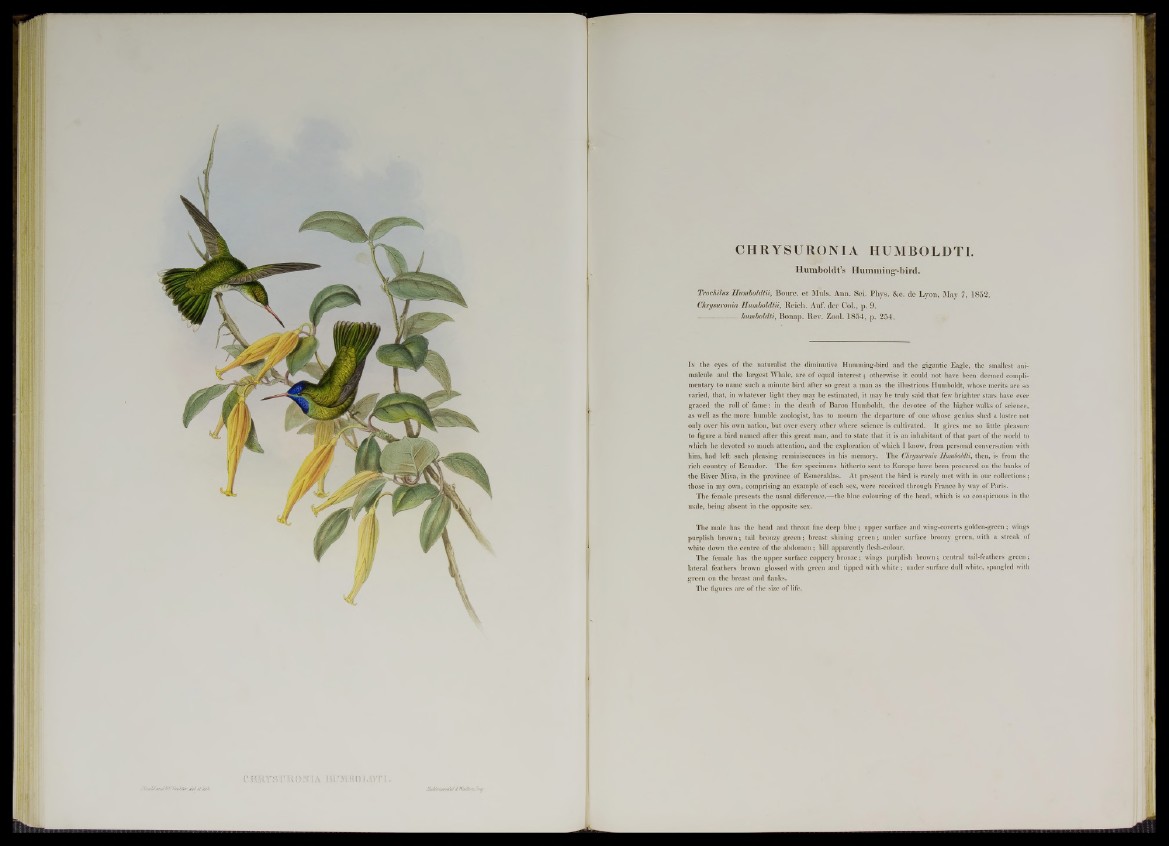
CHRYSURONIA HUMBOLDTI.
Humboldt’s Humming-bird.
Trochilus Uumboldtii, Bourc. e t Muls. Ann. Sci. Phys. &c. de Lyon, May 7, 1852.
Chrymronia Humboldtii, Reich. Auf. der Col., p. 9.
---------------- humboldti, Bonap. Rev. Zool. 1854, p. 254.
I n the eyes o f the naturalist the diminutive Humming-bird and the gigantic Eagle, the smallest animalcule
and the largest Whale, are of equal interest; otherwise it could not have been deemed complimentary
to name such a minute bird after so great a man as the illustrioas Humboldt, whose merits are so
varied, that, in whatever light they may be estimated, it may be truly said that few brighter stars have ever
graced the roll of fame: in the death of Baron Humboldt, the devotee of the higher walks of science,
as well as the more humble zoologist, has to mourn the departure of one whose genius shed a lustre not
only over his own nation, but over every other where science is cultivated. It gives me no little pleasure
to figure a bird named after this great man, and to state that it is an inhabitant of that part of the world to
which he devoted so much attention, and the exploration of which I know, from personal conversation with
him, had left such pleasing reminiscences in his memory. The Chrysurotiia Humboldti, then, is from the
rich country of Ecuador. The few specimens hitherto sent to Europe have been procured on the banks of
the River Miva, in the province of Esmeraldas. At present the bird is rarely met with in our collections;
those in my own, comprising an example of each sex, were received through France by way of Paris.
The female presents the usual difference,— the blue colouring of the head, which is so conspicuous in the
male, being absent in the opposite sex.
The male has the head and throat fine deep blue; upper surface and wing-coverts golden-green ; wings
purplish brown; tail bronzy green; breast shining green; under surface bronzy green, with a streak of
white down the centre of the abdomen ; bill apparently flesh-colour.
The female has the upper surface coppery bronze; wings purplish brown; central tail-feathers green;
lateral feathers brown glossed with green and tipped with white; under surface dull white, spangled with
green on the breast and flanks.
The figures are of the size of life.